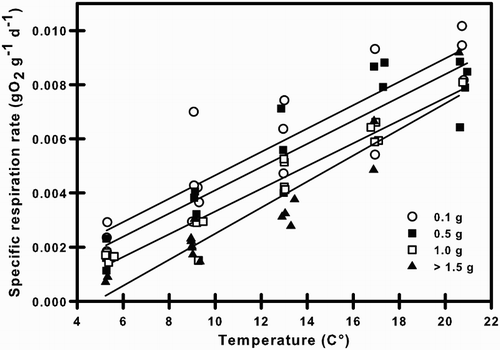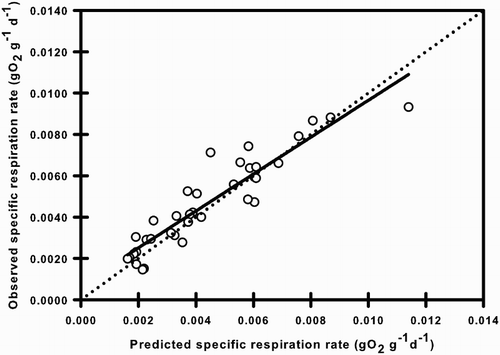Figures & data
Table 1. Body mass (g, mean ± SD) , specific metabolic rate (g O2 g–1 d–1, mean ± SD) and fish number of Galaxias maculatus at different test temperatures and body masses.
Figure 1. Relationships between the log-specific respiration rate and log-body mass (W, g) of Galaxias maculatus at different temperatures (T, °C). Plotted lines represent best-fit regressions for each temperature.

Figure 2. Relationship between the specific respiration rate and temperature (T, °C) of Galaxias maculatus at different body masses (W, g). Plotted lines represent best-fit regressions for each body mass.

Figure 3. Specific respiration rates under the combined effects of body mass and temperature of Galaxias maculatus. model for fitted curves at varying temperatures. Plotted lines represent best-fit regressions for each temperature.


